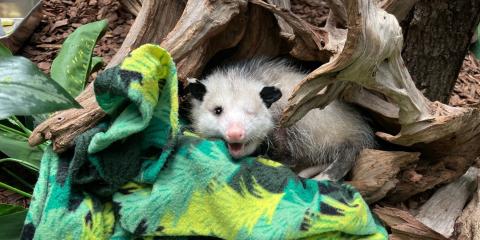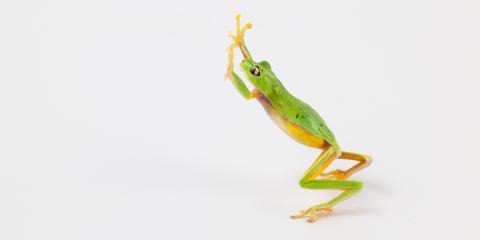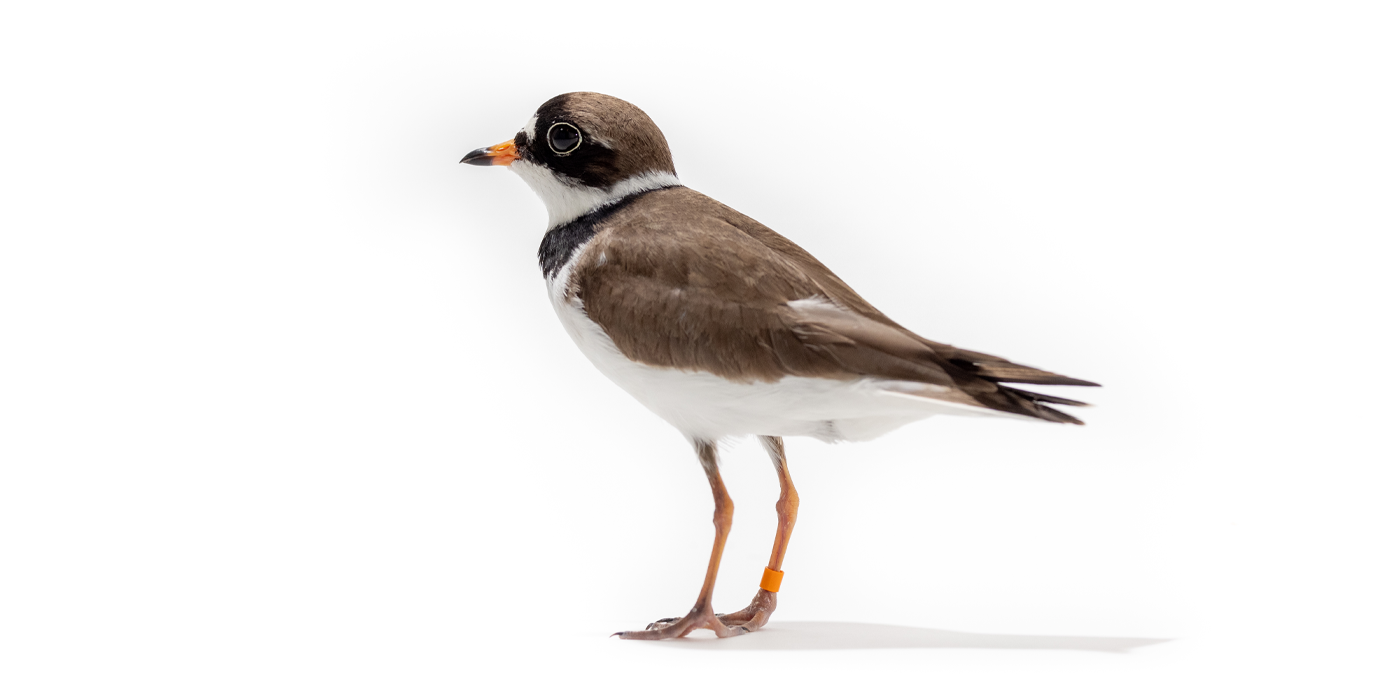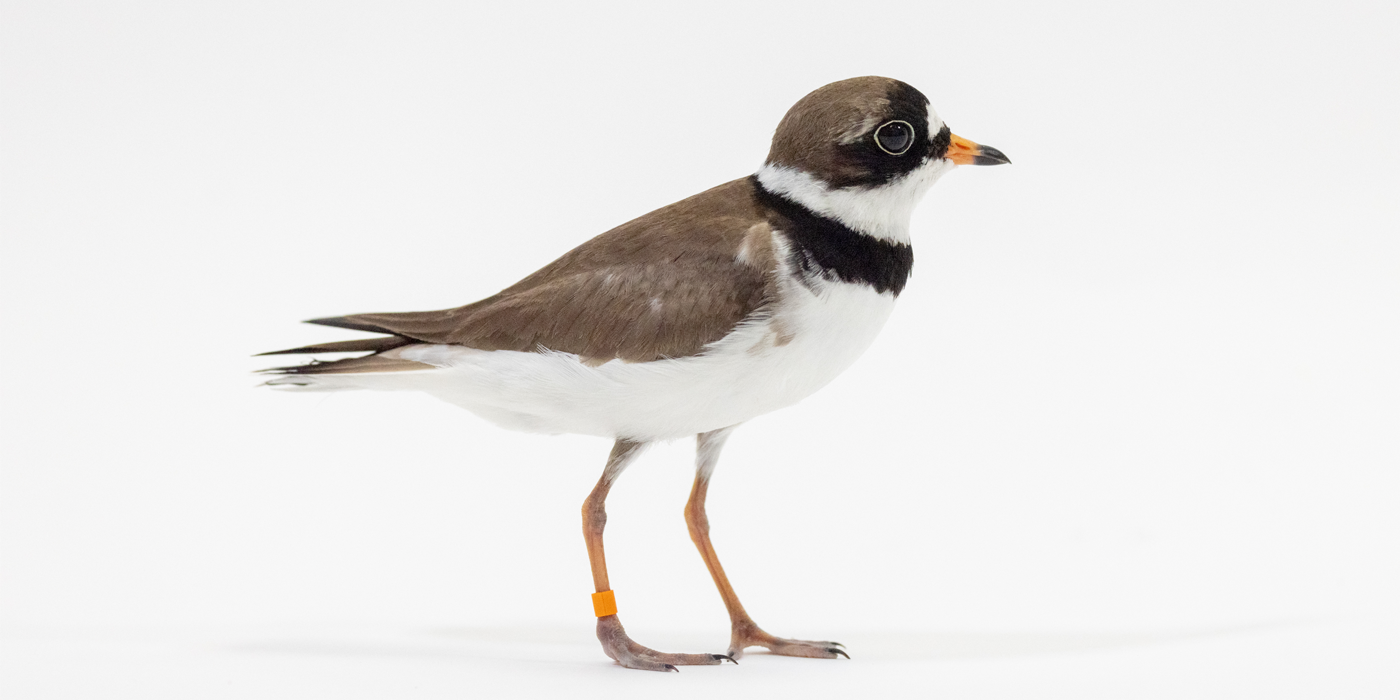Physical Description
Semipalmated plovers have plumage that alternates between the breeding and non-breeding season.
Between March and August, the breeding season (or alternate plumage) is displayed. The upper part of their body is brown and the underparts are white. Near the breast is a black band that circles around the neck, above which is a white collar that extends to the bill. A white spot is located between the black eyes, which are lined with a yellow-orange ring. The bill is short, with a yellow-orange base and a black tip. The legs are a dull yellow or orange. Females can be distinguished by the brown feathers on their faces and breast-bands, while males have more orange on their bills.
During the non-breeding season, from September until February, their basic plumage is displayed. Here, the black banded plumage on the head and breast is replaced by gray and brown and a white stripe that goes past their eyes, sometimes combining with the forehead. The bill also changes colors; the yellow-orange becomes duller, and the blackness spreads from the tip to the base. It is harder to differentiate between males and females in winter, but males have blacker heads.
Size
Native Habitat
Lifespan
Communication
Semipalmated plovers use a variety of vocalizations to communicate. They have a standard call note that sounds like a whistled chu-wheet. They also have different calls to attract a mate or to sound an alarm about a threat nearby.
Additionally, they use movements to communicate. For example, they may fake an injury by fanning their tail, tilting their body, and partially opening their wings to distract humans or other predators and lure them away from their nest. Some will defend nesting or feeding territories by running, chasing, or pushing other birds aside.
Food/Eating Habits
During the breeding season and while migrating, they mostly eat invertebrates like shore flies, polychaete worms, amphipods, beetles, spiders and solider fly larvae. They tend to forage in wet or damp areas, like shorelines, flooded fields, or tiny pools of water from melted snow. They primarily hunt using their vision, and if they see prey they will quickly peck or snatch it. They will otherwise stick their bill into the ground to probe for food. Semipalmated plovers will also stir their feet in muddy water to locate prey. They use the wintertime to gain extra body weight, which provides them with enough energy to make their spring migration.
Sleep Habits
Social Structure
Reproduction and Development
Males are the first to arrive at the breeding locations in the sub-Arctic and southern Arctic regions. The males establish territories along rivers, beaches, ponds, lakes and peaty areas by digging out a shallow nest, or a scrape, in well-drained bare sand or gravel. Occasionally, they will nest on moss carpets or lichen. The females arrive shortly after and sit in the scrape of the male she chooses to mate with, forming a pair. They line the nest with whatever material is nearby: rocks, shells, leaves, charcoal, seaweed, grass, sand, glass and woody debris. Females will lay four eggs that are light brown or pale olive and covered in black or brown blotches.
The pair takes turns incubating the eggs, rotating every two to four hours until the eggs hatch after 23 to 25 days. The chicks are brooded for five days after hatching. The female abandons her offspring after 15 to 25 days, and the male becomes the sole protector of the chicks. The chicks may be led by their parents to a lake for feeding, but they find food by themselves. The chicks can walk within hours of hatching and fly within 23 to 31 days.
Juveniles display plumage like adults in the non-breeding season. Their bills are entirely black, and the white is more widespread. The breast band is narrower than in adults. Feathers on their upper wings may have pale brownish-yellow or gray margins.
Conservation Efforts
Help this Species
- Reduce, reuse and recycle — in that order! Cut back on single-use goods, and find creative ways to reuse products at the end of their life cycle. Choose recycling over trash when possible.
- Organize or attend a stream, river, lake or other waterway cleanup in your area to preserve aquatic habitats for local species.
- Avoid single-use plastics, such as plastic bottles, bags and utensils. Choosing reusable options instead can help reduce plastic pollution.
- Protect local waterways by using fewer pesticides when caring for your garden or lawn. Using fertilizers sparingly, keeping storm drains free of litter and picking up after your pet can also improve watershed health.
Animal News

Remembering Basil, Our Virginia Opossum



